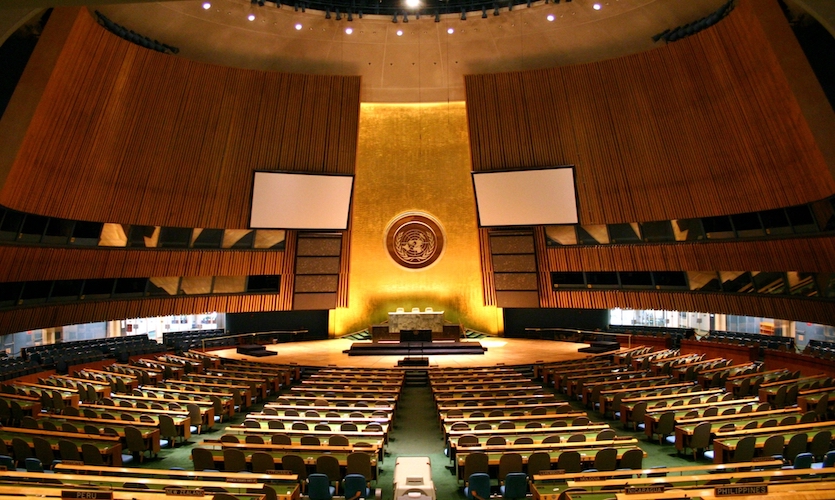Beijing, on May 31, said that it would allow married couples to have as many as three children. Aimed at supporting education and childrearing, China will provide government support to the parents. This is intended to reverse a worsening demographic situation that presents both social and economic challenges. In addition, China is reducing education costs for families, stepping up tax and housing support, safeguarding working women’s legal rights, and cracking down on the size of dowries. As part of the effort, young people will also be educated on marriage and love.
The news was reported following the Politburo meeting held on Monday, which was presided over by President Xi Jinping. On May 11, Chinese officials announced that the country was on the verge of a population turning point after years of rapid population growth. The population shift is a result of Beijing ending its decades-long “one-child policy”. According to the BBC, the Xinhua news agency stated, “the policy change will come with supportive measures, which will be conducive to improving our country’s population structure, fulfilling the country’s strategy of actively coping with an aging population.”
Policy Change
Until 2016, China maintained its one-child policy, which was approved by the then-President Deng Xiaoping, in 1980. Implemented more effectively in urban areas, this policy included enforcing the policy by offering families financial incentives to have only one child, making contraceptives readily available, as well as imposing sanctions against those who violated it. According to Chinese authorities, the policy averted severe food and water shortages by preventing up to 40 crore babies from being born. However, concerns over an aging population threatening economic growth forced the ruling Communist Party to relax the policy. Even though the relaxation of the policy did lead to more young people living in the country, it was not enough to prevent an impending demographic crisis.
The fertility rate in China decreased to 1.3 births per woman by 2020, compared to 2.3 in India. As announced last month, China’s population has grown at its slowest rate since the 1950s, reaching 1.41 billion, fueling concerns that China will grow old before getting rich. Critics also say Beijing waited too long to deal with the population decline. According to the Hindustan Times, China is now on equal footing with aging societies like Japan and some European nations, but without the accumulated wealth. Chinese people currently have a median age of 38.8, which will rise to 55-56 by 2050. Indians have a median age of 29, which will increase to 38 by 2050, and Americans have a median age of 40, which will be 42 by 2050. To encourage couples to have more children, China will need to raise incentives at a substantial economic cost.
People’s Reaction
Despite its sound promises, the policy has been questioned and criticized. Speaking to Reuters, Hao Zhou, a senior economist at Commerzbank, asked, “If relaxing the birth policy was effective, the current two-child policy should have proven to be effective too. But who wants to have three kids? Young people could have two kids at most. The fundamental issue is living costs are too high and life pressures are too huge.” Yifei Li, a sociologist at NYU Shanghai, said, “People are held back not by the two-children limit, but by the incredibly high costs of raising children in today’s China. Housing, extracurricular activities, food, trips, and everything else add up quickly. Raising the limit itself is unlikely to tilt anyone’s calculus in a meaningful way, in my view.”
Ye Liu, a sociologist at King’s College, London, lists three factors that are discouraging young people to follow the policy. According to the Reuters report, she said, “The three obstacles are childcare cost, employment discriminations against women of childbearing and child-rearing years and a lack of safeguarding children’s welfare in various industries and private childcare providers.”
Research Fellow at a think tank in Brussels, Simone Tagliapietra, expressed concern about the results of policy relaxation on the environment. According to him, China’s greenhouse gas emissions are primarily influenced by four factors: population size, GDP per capita, the energy intensity of GDP, and energy consumption intensity. Keeping emissions under control would require a greater reduction in one driver than the rest.
Reproductive Rights At Odds
In addition to environmental and socioeconomic penalties, the policy also remained controversial for violating human rights and unfairness towards the poorer Chinese, since the richer ones would be able to afford sanctions.
As the focus is on the aging demographic structure, the reproductive rights of individuals have been neglected. The state seems to violate human rights, as it did during the one-child policy by forcing abortion and sterilization against people’s will. Moreover, the Chinese government has been accused of using reproductive limitations as a tool to practice “social control”, reported the Indian Express. Responding to the policy, Joshua Rosenzweig, the head of Amnesty International’s China Team, said, “Governments have no business regulating how many children people have. Rather than ‘optimizing’ its birth policy, China should instead respect people’s life choices and end any invasive and punitive controls over people’s family planning decisions.”
Read More: Ethiopia’s Tigray Crisis
Among both young and old, the announcement has sparked a new conversation. Weibo is awash with posts supporting and opposing this action. Even though some are in favor of this move, many are still questioning the impact it will have once the policy is implemented. Previous efforts have not only affected fertility rates but have created a severe gender imbalance. In light of the environmental crisis, growing socio-economic disparities, and protecting the basic reproductive rights of individuals, it is unclear what effect the new policy will have.










